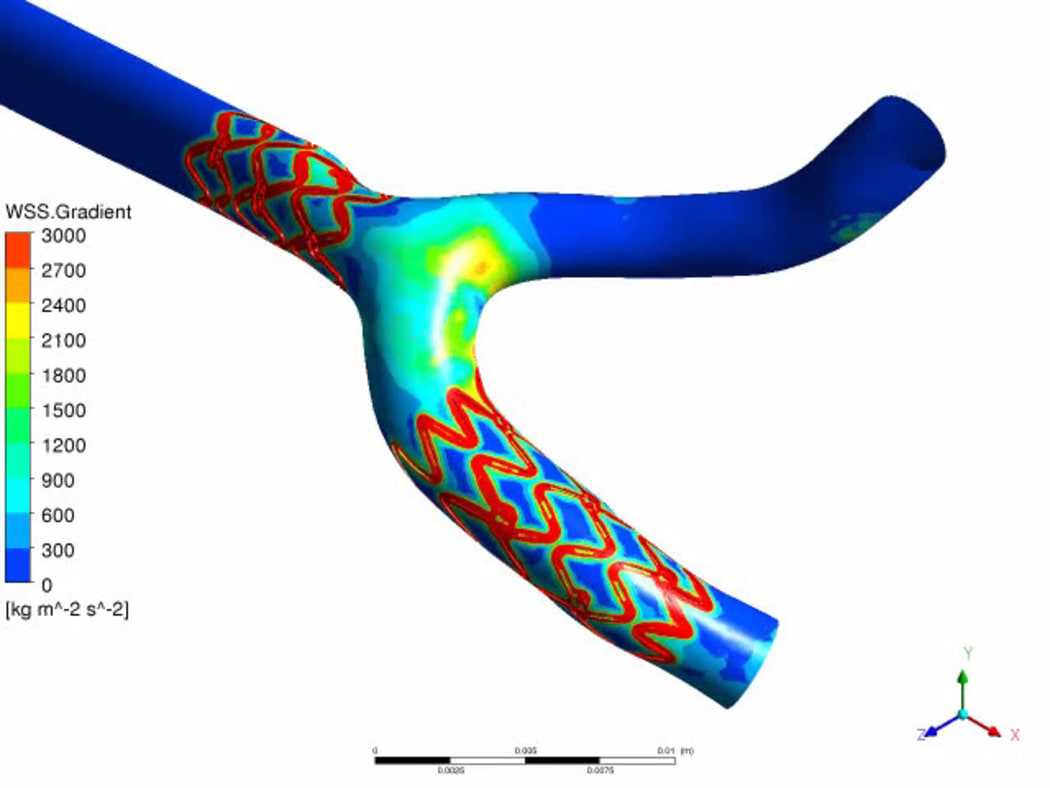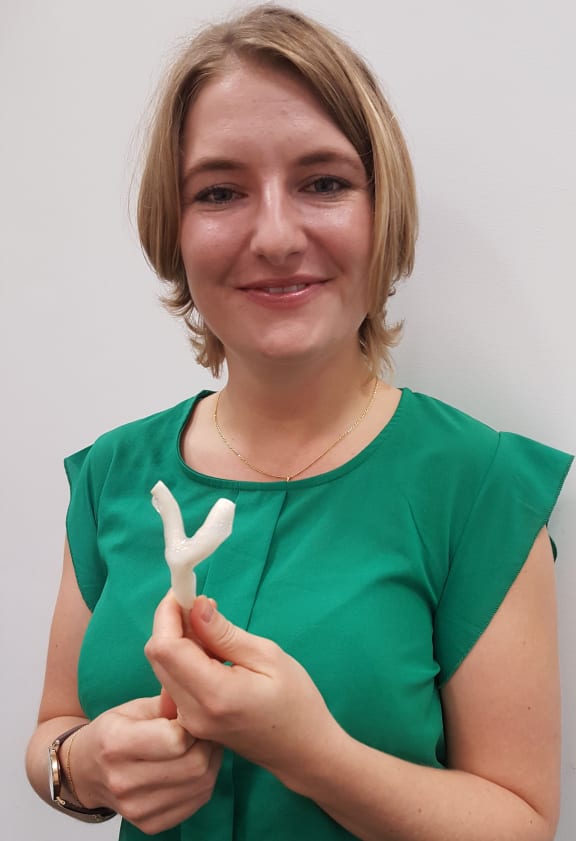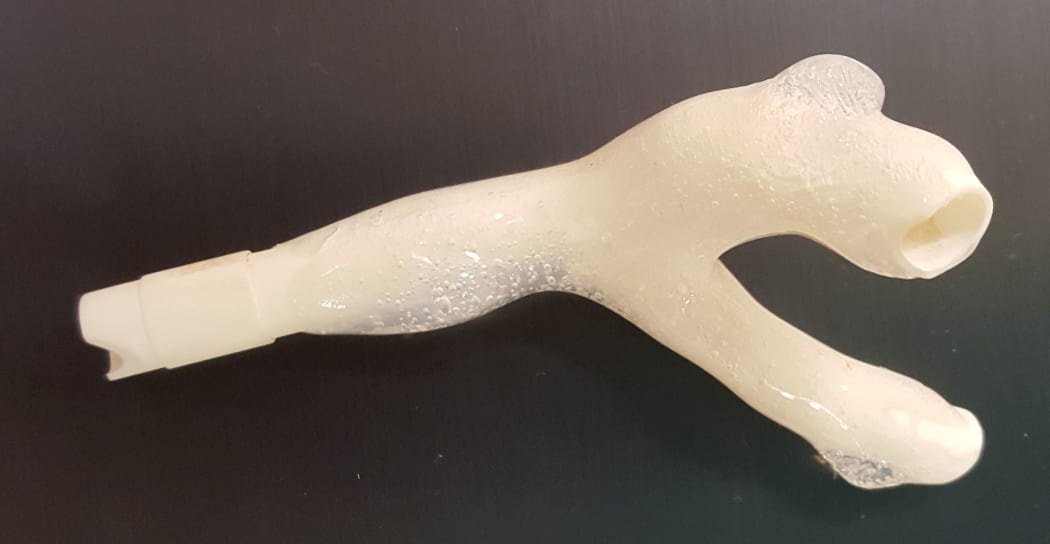Susann Beier is combining engineering and medicine to understand the way blood flows in the heart’s coronary arteries.
She hopes her maps of coronary trees will lead to better personalised approaches to the treatment of heart disease.

Computer models of blood flowing through coronary arteries identifies places where plaques are likely to form, and how effective stents will be. Photo: Susann Beier / University of Auckland
Subscribe to Our Changing World for free on iTunes, Spotify, Stitcher, RadioPublic, the RNZ App or wherever you listen to your podcasts.
Coronary arteries supply blood to the heart muscle. Two coronary arteries split off from the aorta, and then divide into smaller and smaller arteries to reach all parts of the heart. The system is essentially a tree-like network of branching pipes.
During a heart attack a fatty deposit, known as a plaque, blocks part or all of a coronary artery. This blockage disrupts blood flow, causing damage to the heart muscle which is starved of oxygen.

Susann Beier holds a larger-than-life size 3D-printed coronary artery. Photo: RNZ / Alison Ballance
Susann Beier, at the University of Auckland, says that coronary arteries are difficult to study as “they are tiny and constantly moving”. They are also hidden around the heart and behind the lungs.
Despite the difficulties, she has worked with doctors and heart patients at Auckland City Hospital to create more than 500 scans of coronary trees. “This is the largest data set to date, in the entire world.”
She uses a technique known as a CT angiogram. Susann says “it’s effectively a 2D grayscale image of many different slices across your chest.” Susann then combines these to generate a 3D virtual model of each patient’s artery tree.
“This is really cool because then we can see differences between individuals,” says Susann.
Like a river
Once Susann has built the virtual models she runs computational simulations of blood flow to identify where shear stresses are occurring. “These stresses will determine where the plaque will enter the arterial wall and accumulate.” Basically she is identifying danger points where future blockages might occur.
“It’s great because it gives you an idea of the disease susceptibility of an individual.”
Shear stresses develop because the way that a fluid flows is determined by the physical structure of the pipe. Susann says a river is a good analogy.
“Sometimes [in a river] you have rapids or a really strong curvature [or bend]. And the flow is altered according to the shape of the river bed – and it’s very much the same in our bodies.”
The shape or geometry of the artery, and the angle of each branch, are critical factors. “We found some patients who have really small, narrow, slender arteries, and their stress profile looks very different to … patient who might have very wide strong angles in their branches, and very thick artery walls.”

A scaled-up 3D printed model, based on a real coronary artery. Photo: RNZ / Alison Ballance
Crunching the numbers
Susann uses computational fluid dynamics (CFD) to run her simulations and predict where plaques will develop.
These require lots of computing power, and as result Susann says she is the second largest user of the national supercomputing cluster (the largest use is for New Zealand weather prediction).
The benefit is that she can produce reliable predictions without a patient having to undergo surgery.
The Coronary Atlas
Susann’s coronary artery maps are now part of an online Coronary Atlas, and a research project to improve the performance of stents. Stents are metallic meshes that are inserted into blocked arteries to keep them open, but they don’t always work.
Susann hopes that her work will help create more efficient stents, that in future might be tailored to fit individual patients.
Previously, Susann has been on Our Changing World talking about her research pumping fluids through scaled-up 3D printed replicas of real coronary arteries.
You're not doomed by your DNA
Anna Pilbrow recently told Our Changing World that much of the genetic risk behind inherited heart disease comes from DNA that lies in the dark matter of our genome, rather than in our genes themselves


